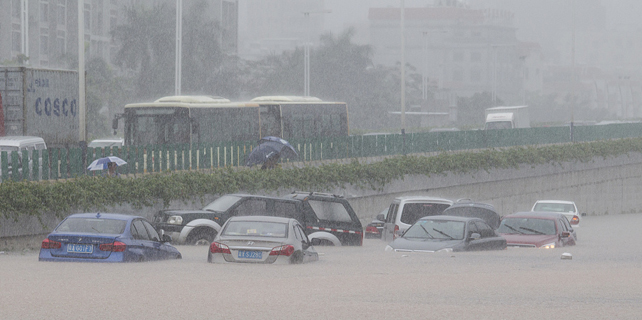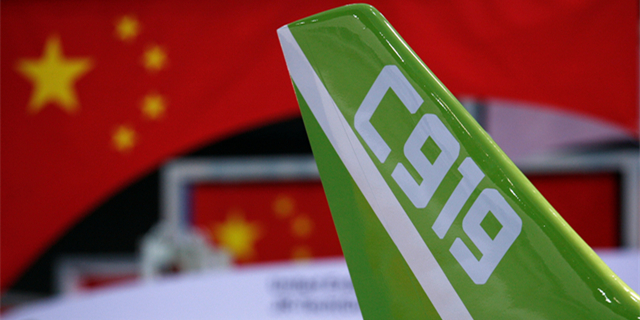The Korean nuclear issue: Past, present, and future – A Chinese perspective
The U.S.-DPRK Agreed Framework and the first Korean nuclear crisis
The year 2003 was a watershed for China's role in helping address the Korean nuclear issue. Prior to then, the issue was addressed exclusively by the U.S. and the DPRK through bilateral negotiations resulting in the Agreed Framework Between the United States of America and the Democratic People's Republic of Korea (hereafter, the U.S.-DPRK Agreed Framework). After 2003, however, an international multilateral settlement mechanism was formed, with China as the main mediator.
My narrative starts from the visit of U.S. Secretary of State Colin Powell to China in February 2003. I was present at his meetings as a member of the Chinese receiving team in my capacity at that time as the director-general of the Asian Affairs Department of the Foreign Ministry of China. His visit came at a time of two significant world events. First, on January 10, 2003, North Korea announced its withdrawal from the Nuclear Non-Proliferation Treaty (NPT), resulting in the second Korean nuclear crisis. Second, tensions were rising in the Gulf region and U.S. military action against Iraq was imminent. U.S. President George W. Bush sent Secretary Powell to China to ask for help on the Korean nuclear issue in order to avoid confronting pressures in the Middle East and East Asia at the same time. Hu Jintao, the vice president of China at the time, met with Secretary Powell and his delegation, who made it quite clear that the U.S. wanted China to mediate on the Korean nuclear issue. Specifically, Powell said that the U.S. could no longer trust North Korea, but it could adopt a multilateral approach to seek solutions and suggested that China invite delegates of the U.S. and North Korea to Beijing for talks.
Secretary Powell's visit to China followed the second Korean nuclear crisis, which was largely due to the fact that the U.S.-DPRK Agreed Framework had not been honored by either side and that the relationship between the U.S. and the DPRK had broken down. When Secretary Powell arrived in Beijing, the Agreed Framework was about to fail to meet its target date of 2003, by which point the U.S. should have replaced the DPRK's graphite moderated nuclear reactor and related equipment with two 1,000-megawatt light water reactor power plants. North Korea also appeared to fall short of completing all of its commitments in the Agreement. And this was happening against the backdrop of over half a century of ups and downs in the Korean Peninsula and the entangled relation- ship of the parties concerned. But one thing was clear: As reflected in the name of the U.S.-DPRK Agreed Framework, the U.S. and North Korea were the two protagonists in this phase of history.
To understand the Korean nuclear issue, one needs to trace back to the settlement of the Korean War—a war which in a legal sense has not yet ended.
On July 27, 1953, the Korean Armistice Agreement and the Interim Supplementary Agreement of the Armistice Agreement were signed in Panmunjom between, on one side, the supreme commander of North Korea's Korean People's Army and the commander of the Chinese People's Volunteer Army and, on the other side, the commander-in-chief of the United Nations Command.
But these were only armistice agreements, not peace treaties, leaving all sides in a state of truce, which is one of the root causes of prolonged in- stability on the Korean Peninsula.
After the signing of the Korean Armistice Agreement, the Korean Peninsula remained divided along the 38th parallel north between the ROK in the south and the DPRK in the north. Supporting the South were the Western powers headed by the United States, while the socialist camp led by the former USSR supported the North. The Korean Peninsula became a front of the Cold War, at which the U.S. and the USSR battled for hegemony. Nonetheless, the Peninsula was relatively calm over a period of time as the two superpowers were in relative equilibrium.
However, generally speaking, the military presence on the Peninsula after the war was stronger in the South, as the U.S. preserved its army garrison in South Korea and, starting in 1957, deployed an array of offensive weaponry, including tactical nuclear weapons. In the early 1990s, with the implementation of the U.S.-USSR Nuclear Disarmament Initiative, the U.S. withdrew all of its nuclear weapons from the Peninsula, with its Pacific Headquarters undertaking nuclear protection of South Korea.
In the early period of the Cold War, North Korea believed that it was under tremendous threat and chose to rely on the USSR for security, economic, and energy guarantees and assistance. It also received assistance from the USSR in conducting limited nuclear research. In 1959, North Korea, with the help of the USSR, established the Yong- byon Nuclear Scientific Research Center for the peaceful use of nuclear energy. In 1965, North Korea had its first 2-megawatt small light water reactor, after which the Soviet experts returned home. It may be worth noting that the USSR did not appear to have the intention to help North Korea develop nuclear weapons. While passing on nuclear physics technology, it did not provide uranium enrichment or plutonium production technology.
From the beginning of the 1980s, North Korea started to construct a 5-megawatt natural uranium graphite gas-cooled reactor, which would be able to produce 6 kilograms (13 pounds) of weapons-grade plutonium each year after its completion. From this point, the U.S. started to pay attention to the growth of North Korea's nuclear capabilities. In 1985, the U.S. pressured the USSR to force North Korea to accede to the NPT. In ex- change, the USSR signed an economic, scientific, and technological agreement with North Korea and pledged to provide it with new light water re- actors. However, the USSR failed to live up to its obligations in this agreement, and North Korea never performed its duty to accept inspections by the International Atomic Energy Agency (IAEA) in accordance with NPT requirements.
















